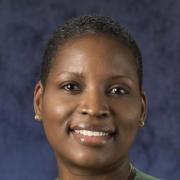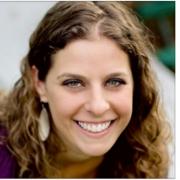Flipping the Script: Educators Driving Public Policy

You are here
In the theater, scripts create order. Everyone has a part to play, lines to memorize, and stage directions to follow. Productions, regardless of where they’re staged, follow a similar pattern—right up until someone flips the script. Sometimes it’s a small change: a surprising casting choice, a reframed set design. And sometimes it’s a complete shift—The Wizard of Oz is reborn as The Wiz, then reimagined as Wicked.
In early childhood education, we may not think of our day-to-day actions as being guided by a script, but in many ways they are, with assigned roles and lines that have, for the most part, kept educators and policymakers apart. As it stands, each group stars in different acts of the play, and we rarely do scenes together. For our children’s sake, however, it’s time for us to flip the script. This article is a call to action, with recommendations for educators and policymakers about concrete steps that can make meaningful collaboration part of our day-to-day work.
Real victories
When educators and policymakers do work together, the results are impressive. From T.E.A.C.H. Early Childhood (Child Care Services Association 2015) to the Worthy Wage campaign (Whitebook 2002), there have been national and state efforts, led by policymakers and educators in varying degrees, to enhance the image, effectiveness, and compensation of early childhood educators. Head Start, the Council for Professional Recognition, state-funded pre-K programs, and NAEYC Early Learning Program Accreditation increased the demand for educators with degrees and credentials. States developed workforce data systems and registries to better support and understand the profession. NAEYC launched its higher education accreditation and recognition systems to assess and support degree programs preparing early childhood educators. In some states, prekindergarten teachers working in early care and education centers receive pay comparable to their counterparts’ pay in public elementary schools. As teachers continue to stand up for their profession, and engage in teacher-led walkouts in states from West Virginia to California, investments in teachers from the early grades on up may continue to increase.
The visibility and significance of the early childhood education profession was elevated with the release of the Transforming the Workforce for Children Birth through Age 8 report (IOM & NRC 2015). Grounded in the science of child development, this report articulated the ways in which the various practitioners who contribute to the care and education of children from birth through age 8 are not acknowledged as a workforce unified by the common knowledge and competencies needed to do their jobs well. It offered recommendations on ways to improve the quality of professional practice and the practice environment for those professionals.
In 2017, building on the legacy and momentum of these efforts, NAEYC and 14 other national professional organizations launched the Power to the Profession (P2P) initiative, with two distinct and differentiating features. First, P2P was established explicitly to define the first-edition unified framework for the early childhood education profession, birth through age 8, across all settings, sectors, and states. The initiative was rooted in a theory of change with a broad base of research indicating that children benefit from a distinct, diverse, and defined early childhood education profession, with individuals who possess specialized knowledge, skills, and competencies, regardless of where they work, and who are compensated in accordance with the value of their highly skilled work.
P2P was led and driven by current members of the early childhood education field.
Second, P2P was led and driven by the current members of the early childhood education field. From the decision drivers and decision makers who shaped the framework to the decision-making processes and the decisions included in the framework, the aim was to reflect the lived experiences and expertise of those who comprise the profession itself. Focus groups, surveys, conference calls and webinars, informal conversations, conference sessions, response letters, and focused meetings were continuously expanded to ensure that those impacted most by the P2P framework and those historically marginalized in policy development (such as educators of color working in home-based and center-based settings) were leveraged and elevated as experts. (To learn more about P2P, see www.powertotheprofession.org.)
Finding the right balance of inclusivity and exclusivity was a driver for both of these essential features, albeit in different ways. Addressing the first feature of P2P—establishing a unified framework for career pathways, knowledge, and competencies, qualifications, standards, and compensation—was challenging, in that it required fresh thinking to intentionally minimize the fragmentation of the field and its unintended consequences. Addressing the second feature, however—centering decisions around the expertise of educators—was in many ways more difficult. The lessons learned from having educators drive policy serve as the impetus for this article.
It was clear from the beginning that the task force members and the affiliates, stakeholders, and other partners facilitating P2P conversations across the country had to confront the marginalization of educators in decision-making processes, particularly educators coming from culturally, racially, geographically, and linguistically diverse communities. While their marginalization is rooted in decades of racism and elitism that is both internal and external to the early childhood education landscape, it has resulted in a deep and significant gap between practice and public policy.

In most educators’ careers, policies and recommendations of the magnitude of P2P’s have happened to them and without them. As a result, those practicing as early childhood educators, including higher education faculty and others preparing educators, have become divorced from policy processes. Educators and education professors are overwhelmingly accustomed to not seeing themselves as experts or owners of their professional identities. In conversations with facilitators of the P2P nationwide engagement process, educators frequently voiced well-founded doubts about the influence their thoughts and recommendations would have on public policy and public financing. In seeking assurances that their lived experiences mattered, they shared the traumas in their lives wrought from working in an underfunded, top-down system created for them but without them.
The loudest and clearest message of P2P has been that educators’ experiences must be heard and acknowledged. Within P2P and beyond, this needs to happen in ways that foster authentic and accessible engagement and that include references to other professions, such as nursing, so educators are able to see that their leadership can transform their profession.
The P2P discourse and the unifying framework it is producing both became much more robust, co-owned, and comprehensive because they were shaped by the expertise of the educators most directly impacted by the decisions being made. As of June 2019, groups in 46 states and territories had hosted P2P events, including information sessions, conference keynotes, focus groups, interviews, workshops, and webinars. Multiple rounds of iterative feedback (in English and Spanish) yielded comments and survey responses from nearly 6,000 individuals from all 50 states, Puerto Rico, and Washington, DC. Some 60 percent of the participants identified as current practitioners and 21 percent as educators of color. The process also included 145 focus groups reaching more than 3,000 individuals and 21 intensive focus groups prioritizing engagement with more than 440 educators from communities of color, educators who speak Spanish, and educators living in rural communities throughout the country. Many of the latter were part of collaborations and conversations organized and facilitated by partners such as the American Indian College Fund, the National Black Child Development Institute and affiliates, the Latino Policy Forum, and The Education Trust.
As a field that pays verbal homage to the research-policy-practice triad and the diversity-equity duo, this type of engagement between policymakers, influencers, and educators on pertinent issues related to educators’ professional practice and accountability should be expected and routine. This article offers strategies and recommendations for early childhood educators (including faculty and professional development providers) and for policy specialists (including policymakers, analysts, and influencers) to flip the script—to play new roles, learn new lines, and help to narrow the gap between educators and the public policies that drive their practice.
The Early Childhood Educator Perspective
By Marica Cox Mitchell
I started my career in the early 1990s as a teacher assistant and then as a teacher. My role was to support the learning, development, and well-being of each child, giving careful consideration to family and community. The bulk of my preparation was driven by national and state professional competency standards related to curriculum development and implementation, responsive relationships, learning environments, assessments, pedagogy, and partnerships with families.
Throughout my teacher preparation courses and my later professional development opportunities, the vast majority of the lectures, group projects, reading assignments, and research reports focused solely on my classroom practices. Yet, I realized early in my teaching career that while the classroom environment I intentionally curated mattered, early childhood public policy and financing conditions also had a direct impact on my professional practice. Child care facility regulations had a greater influence on my professional development than my own understanding of my professional growth areas. Likewise, NAEYC accreditation criteria influenced my classroom design and materials more than my observations and formative assessments. In the late 1990s and early 2000s, I started to see the bigger picture: Head Start Performance Standards, the then-No Child Left Behind Act, school district teacher evaluation systems, teacher licensure policies, and quality rating and improvement systems (QRIS) all had—and still have—policies and requirements that influence the identity, compensation, and practice of early childhood educators.
Mind the gap
We early childhood educators are constantly reminded, and rightfully so, that the conditions we create in our classrooms can impact the development of the young children we support. Yet, we often do not fully understand the inner workings of the public policy contexts that also drive and sometimes dictate our practice. We consciously and subconsciously grant policymakers and government officials full autonomy to create public policy and regulatory systems, even though our code of ethics requires us to participate in developing policies and laws that are needed and to cooperate with families and other individuals and groups in these efforts.
A combination of factors contributes to this distance between public policy and practice. Some of these factors include
- Minimal professional preparation focused on early childhood public policy development
- Impenetrable barriers to accessing the places where policy decisions are made
- Limited time to focus on both classroom responsibilities and external policy contexts
- Inconsistent definitions of who early childhood educators are and what they do
- The frustration educators experience when we feel that policies and regulations are hindering rather than helping our ability to implement practices that best support children’s learning and development
- The perception that public policy and advocacy are solely the responsibility of systems influencers and policy experts
- Educators’ own reluctance to define themselves as experts who deserve to be decision makers
I experienced some of these factors during my journey from being an educator practicing in the classroom to one practicing in the public policy and systems-building arena. As a classroom teacher, I assumed others were responsible for driving policy. My role was simply to pay my membership dues so that professional and local advocacy organizations could do the policy lift. I was an implementer of policies and position statements; I saw myself as “just a teacher,” with nothing to contribute in big-league policy conversations.
This division of duties between policy and practice worked for me because I was too exhausted to tackle both—time outside of my demanding work environment was for my family and my personal restoration. To me, it was the responsibility of school leaders (principals, superintendents, and center directors) to engage government agencies and their staff during meetings that were inevitably held during times I had to teach. My fellow teachers and I would discuss the strengths and gaps of early childhood public policies and regulatory systems, but we didn’t have the time or space to share our views with policymakers. Even my college faculty who had conducted significant research in early childhood education appeared to be policy implementers, not co-creators.
My initial entry into the public policy and systems-building arena meant climbing a steep learning curve. I felt confident about what I knew, from both experience and formal education, and also vulnerable enough to identify what I did not know. Fully embracing my gaps, I completed graduate coursework in education leadership, sought out mentors, and accessed all of the learning opportunities I could.
The transition also required significant emotional energy. I had to self-affirm the specialized knowledge and the (otherwise often missing) practice-based lens I brought to public policy conversations. I also had to prepare myself for leading change in predominantly White, socially and economically privileged policy-making spaces. Engaging individuals and businesses that were thriving—and therefore uninterested in changing who had a place at the policy table and what was discussed—required me to self-regulate and persist. From these experiences, I became committed to narrowing the gap between public policy and practice and to reassuring practicing educators that they had the expertise and experience needed to influence policies that impact early childhood education. Public policy requires shared leadership and diverse expertise.
Based on what I’ve learned, here are some strategies I recommend to help early childhood educators, including faculty, prepare to flip the script and become more active in the public policy and advocacy arena.
1. Know your professional practice
It is important for you to claim your space as an expert in your professional practice. To do so, you must have a command of the core knowledge base and the competencies that define the practice of early childhood educators. Educators as experts should be able to speak with authority, combining evidence and experience. For example, what factors impact the domains of child development? What are ethical assessment practices? How is effective curriculum developed and implemented? How is the pursuit of equity evident in your classroom? What do family-centered partnerships look like? These are complex questions, and responding to them requires specialized preparation.
Earning industry-recognized and accredited degrees and credentials signals that you have an understanding of the specialized research and rationales that drive early childhood educators’ practice. Own the knowledge. And just as you claim your space with policymakers, so too do you need to claim your space with other members of the field. Value those who don’t share your specialized competencies, professional responsibilities, and accountability, but don’t cede the floor to them. All of our experiences matter, and we each have an obligation to speak on our own behalf.
2. Know that you belong at the policy-making table
Like young children, we too thrive when there is a sense of belonging. As educators, we sometimes feel like we do not belong in the policy-making arena. We relegate policy decisions to those whom we deem to be policy experts or leaders. In some cases, we do not feel welcome in the arena as intellectual or social equals, so we assume our expertise and experiences do not matter. However challenging and sometimes uncomfortable initial experiences in public policy may be, know that you have a professional and ethical obligation to be in those spaces. Know too that your journey into
public policy and regulatory systems deepens your expertise as an educator. Finally, know how valued you are in this space: advocating for young children is our responsibility and a part of our profession. What’s more, surveys have found that teachers’ and faculty members’ voices are trusted by likely voters—the very people we need to advance early education public policy and financing agendas (NAEYC 2015).
Advocating for young children is our responsibility and a part of our profession.
3. Understand the relevant government agencies and individuals
Many early childhood programs rely on a combination of government and private funding to be able to deliver high-quality services for young children and their families. Funding from the government (and from some private sources like philanthropic organizations) comes with accountability expectations or regulations. These requirements are typically developed and monitored by a network of local, state, and federal government agencies, and they inevitably impact educators’ practice in intended and unintended ways. Connecting with individuals in these agencies can help you navigate the systems. Be informed about the various agencies, and build relationships with individuals in those agencies and with the policymakers leading their work.
For example, do you know which government agency is responsible for child care regulations in your state? Which federal agency is responsible for the Head Start Performance Standards?
Which state or local agency sets the standards for teacher licensure? Which state or local agency sets the standards for publicly funded prekindergarten? Does your state have a quality rating and improvement system? If so, who manages your state’s QRIS? Your state likely has federal funding to support educators; which agencies decide how this funding is spent? Seeking the answers to these questions and connecting with individuals who can help you navigate these systems are crucial steps toward your successful engagement in the policy arena.

4. Increase your network—you can’t do it alone
As wide as the gap between practice and policy may seem, there are many advocates working to narrow it. Join a national organization and its local affiliate to begin building your network. Your leverage is only as strong as the national organizations that represent you. And those organizations grow stronger when their members are more active. Attend meetings and conferences hosted by professional organizations to meet others with similar or divergent perspectives. Organize informal meet-ups, like book clubs, potlucks, and picnics, to deepen relationships within your network. Use social media to stay connected.
Find authentic ways to make your network as diverse as the early childhood education profession itself. For example, do the educators in your network work in a variety of settings, including home-based programs, centers, and elementary schools? Does your network reflect the racial, cultural, and linguistic diversity of the profession? Do you have mentors who share their authentic selves with you? Do you have faculty and professional preparation specialists in your network? Do you have relationships with policy specialists at the local, state, and national levels? Do you know at least one staff member in each professional organization you belong to? The wider and more diverse your network, the more opportunities you’ll have to advocate and influence policy in a way that makes sense to you.
And like all relationships, your relationships with members of your network thrive when they are reciprocal. Bring something to the table, starting with your willingness to share and to listen.

5. Make your expert voice heard
As an expert in early childhood education, there are many ways you can make your voice heard. Respond to calls for public comment, explain the importance of early childhood education at school board meetings, participate in policy meetings and town halls, share feedback on social media, join online community conversations, respond to surveys, host a radio show, invite policymakers to visit your program, ask candidates for public office to explain how they plan to support early childhood education, and/or write letters to policymakers. If these typical mechanisms do not work for you, advocate for and create the opportunities you want. Don’t assume that others have the perspective and experience you can bring to a conversation, and don’t automatically assume that others know more than you.
National professional organizations and their affiliates have many volunteer leadership opportunities for educators, including participation on boards, committees, councils, and peer reviewer panels. (To learn how to get more involved with NAEYC, visit NAEYC.org/get-involved.) In my opinion, every early childhood educator should be a member of a professional organization that can help bring our individual and collective voices to bear in the policy-making arena.
The Policy Perspective
By Lauren Hogan
From school boards to think tanks to the halls of Congress, thousands of people in this country are involved in designing and influencing policy related to young children, their families, and the people who care for and educate them. I personally came to this work compelled by my experience leading an after-school program for teenagers, convinced our country needed to both start earlier and think bigger. Since shifting my focus to early childhood, I have led literacy workshops for families and conducted home visits with parents of infants—but my professional degree is in public policy, not early childhood education.
While I’ve advocated for every early learning setting in my decade of work in policy departments at professional membership organizations, including NAEYC and the National Black Child Development Institute, I have never directly worked in one of those early learning settings. That is not uncommon. Most policy-oriented people work in professional associations, mayors’ offices, Congress, think tanks, unions, state legislatures, lobbying firms, businesses, governors’ offices, research institutions, city councils, and the White House. Very few of us are in schools, child care centers, or family child care homes—and there are not many former early childhood educators among policymakers, either.
Mind the gap
In my experience, many in the policy arena will readily admit that policies would likely work better in practice if they were informed and shaped by people on the ground who best understand what it takes to achieve the shared goal of increasing access to high-quality early learning.
Yet the gap between educators and policy specialists continues to exist. It exists despite widespread recognition that traditional approaches—such as consulting with researchers, economists, and various other non-classroom experts—do not necessarily yield the best results.
This gap exists despite professed beliefs by policymakers who say they want to listen to the voices of educators, and despite flares of enthusiasm by educators who want their voices heard.
This gap exists because it is hard to bridge, built as it is on long-standing, deep-seated beliefs, assumptions, and biases, not to mention the influence of expectations and time limitations, as well as the interplay of ego and power. At its best, to be a policymaker is to believe that you can make something better than it is. But even with good intentions, this service orientation can transform into believing not only that you can make something better but also that you know better than the people whose lives are affected by the policies you create.
How does this happen? As with so many difficult questions, to answer we all would have to look within ourselves. We would have to reflect on what we believe about early childhood educators that causes us to sideline their voices, to override their objections, and to design and promote policies that invest in systems and structures around the profession rather than in the profession itself.
Grappling with these issues cannot be done in a vacuum, and there is no such thing as finding a single, conclusive answer. It must be done in the context of learning, of seeking out and welcoming new voices, questions, experiences, ideas, and perspectives. Even as the professional apparatus strives to hold early childhood educators accountable for engaging in policy and advocacy work, and to support them in doing so, the fundamental shift must also come from policymakers and influencers, who need to embrace engagement and extend invitations to educators.
I have heard educators offer great, workable, implementable, and innovative ideas for solving policy problems. Based on my experiences, here are some strategies I recommend to help policy specialists flip the script to become more active and intentional in welcoming these ideas and the individual early childhood educators who offer them to the public policy and advocacy arena.
1. Seek to know the early childhood education profession and its professionals
Being an effective policymaker requires specific knowledge, skills, and competencies, just as being an early childhood educator does. But it’s important for policymakers and influencers to know the scope of our expertise—and where it ends. Most of us have never been early childhood educators. Yet even for those who have been educators, the experience of being in a classroom, center, or home-based setting is likely to be a part of a distant past. In addition, because the best policymaking is anchored by, but not limited to, our own personal experiences, engaging with a diverse range of current early childhood educators who are working in varied settings is key.
Being an effective policymaker requires specific knowledge, skills, and competencies, just as being an early childhood educator does.
Each of us must prioritize the act of seeking out and accepting opportunities to show up, so we can experience firsthand what happens in early childhood education every day. We must make time each year to visit early education centers, schools, and family-based settings so that the time never comes when we realize we have not set foot in a particular early learning setting even as we develop policy that influences the educators and children in that setting. In addition to showing up in person, virtual tools and social media can and should be used to break down the barriers between policymakers and educators, so we can make good policies that are implementable in the way they are imagined.

2. Don’t make people bring a folding chair to the table
Shirley Chisholm, the first Black woman elected to the US House of Representatives, famously said, “If they don’t give you a seat at the table, bring a folding chair.” I’ve always loved this quote and its never-say-no, us-against-the-world, get-up-and-at-’em activism. But a part of it has also always bothered me. Because folding chairs are, by nature, impermanent. They are brought out at the last minute to accommodate the unexpected, perhaps unnecessary guest. And the sentiment behind the quotation allows policymakers to do nothing to change our own tables or seats and to continue to operate under the assumption that if people want to participate, they will simply bring their own proverbial chairs. It is time to shift the responsibility for and the burden of making room. Educators have earned permanent seats at the table. (And seats is plural for a reason: let’s agree to include more than one educator so no one person is tokenized.) This might mean building a bigger table. It might mean making the existing table more crowded. And it might mean asking some people currently at the table to give up their seats so new voices can be heard.
3. Make the systems understandable—and worth understanding
We policymakers ask educators to understand the systems, but it is incumbent upon us also to make the systems understandable. Chaos and complexity often serve as gatekeepers, marginalizing those who do not have the power, privilege, or time to easily access and navigate systems made obscure by a combination of history, accident, and design. These systems may include everything from licensing requirements that change when you cross a state border to unaligned, unstackable, English-language-only early childhood training programs that neither improve practice nor lead to career advancement but are required by a state nevertheless. With the implementation of Power to the Profession ahead, there will be opportunities for policymakers to lead and to participate in setting a distinct floor for early education quality that defines the professional preparation, responsibilities, competencies, scope of practice, specialization, compensation, and accountability for early childhood educators across states and settings. We policymakers and influencers should embrace those opportunities to create and finance early childhood systems that are clear, understandable, and navigable for early childhood educators and the families they serve.
4. Go beyond the basic and the best
Policymakers and influencers are often presented with the cultivated voices of highly effective teachers—the educators working in the highest-quality settings and those who have heroically overcome challenges to achieve success. This is understandable, and those voices are critical. Yet, while listening to their stories, we can take advantage of access to these individuals by asking them more than basic questions, seeking to understand things like “What supports did you receive to help you achieve your success?,” “If you have watched your colleagues struggle, what do you think would have made a difference for them?,” and “How have local, state, and federal policies supported or hindered your success?” In addition, policymakers and influencers can seek out, request to talk with, and equally value the voices of those operating without awards, those who are openly struggling, and those who are just barely making it work every day.
Advocates routinely tell educators not to complain to policymakers (and that’s good advice, particularly regarding problems that are not within the policymakers’ jurisdiction to solve), but policymakers should still work to understand the challenges that educators are asking for help to solve. We should respect all educators’ experiences and expertise and listen to their proposed solutions.
5. Make it possible to hear expert voices
As I mentioned earlier, many policy specialists say they value educators’ input. But overall, our actions do not support that claim. To have educators at the table, we need to address their core logistical challenges, namely, time, money, and capacity. One potential solution that addresses each of these barriers at once revolves around the practical and critical issues of release time and substitute pools (filled with well-prepared educators). These are sorely needed in early childhood education. They would make it possible for currently practicing educators to contribute to public policy initiatives during the work day and also to advance their own education by taking classes and doing required coursework without compromising children’s health and safety or the quality of children’s learning experiences.
As we create and fund these needed solutions, we need to establish allowable uses for release time that not only let educators attend classes offered, for example, at 4:00 p.m., by the local college, but also let them provide testimony to a legislature that convenes its hearings at 10:00 a.m. or participate in an early childhood advisory council meeting that happens at 1:00 p.m. every fourth Tuesday of the month.
At the same time, we can elevate and integrate the voices of early childhood educators by requiring that existing advisory councils add members who are practicing educators, creating new educators-only advisory councils, and then holding the council meetings at a time and place when and where those educators can attend, while providing stipends and transportation support.
In addition, from bonuses built into QRIS systems to requirements built into wage supplement programs to the creation of competitive awards, we should incentivize and applaud school districts, state preschool systems, Head Start programs, family child care networks, and other groups that routinely encourage and support their early childhood educators to engage in policy development.
Finally, we should consider how our hearings and briefings support remote and video participation; maybe an educator can’t leave her classroom, but she could share her perspective while the children in her classroom are napping. Maybe she could record and share a video that can be played in the briefing room. There are many ways to invite and expand engagement; continuing to ask educators how they would like to show up would surely yield more needed and creative solutions.
Conclusion
We can take it upon ourselves, educators and policy specialists, to change things together. Power dynamics and relationships shift all the time, closing some doors and opening others. It’s never too late to flip the script, especially knowing that children and families will be all the better when we do.
References
Child Care Services Association. 2015. T.E.A.C.H. Early Childhood and Child Care Wages Annual National Program Report, 2014–2015. Chapel Hill, NC: Child Care Services Association.
IOM (Institute of Medicine) & NRC (National Research Council). 2015. Transforming the Workforce for Children Birth through Age 8: A Unifying Foundation. Washington, DC: The National Academies Press. www.nap.edu/read/19401/chapter/1.
NAEYC (National Association for the Education of Young Children). 2015. Early Childhood Educators: Advancing the Profession—Executive Summary from 2015 Opinion Research with Educators, Potential Educators, and American Voters. Washington, DC: NAEYC. NAEYC.org/sites/default/files/globally-shared/downloads/PDFs/our-work/initiatives/executive_summary_0.pdf.
Whitebook, M. 2002. Working for Worthy Wages: The Child Care Compensation Movement, 1970–2001. Rev. ed. Berkeley, CA: Center for the Study of Child Care Employment.
Photographs: 1, 2, 3, 4, 5, 6, 7, 8 © Getty Images; 1 © NAEYC
Copyright © 2019 by the National Association for the Education of Young Children. See Permissions and Reprints online at NAEYC.org/resources/permissions.
Marica Cox Mitchell is vice president, early childhood for the Bainum Family Foundation. Marcia has worked in the early childhood field for more than 20 years. Her diverse experiences have allowed her to view the field from many perspectives, including the classroom, program, district, state, and national levels.

Lauren Hogan is the managing director of policy and professional advancement for NAEYC, in Washington, DC.
